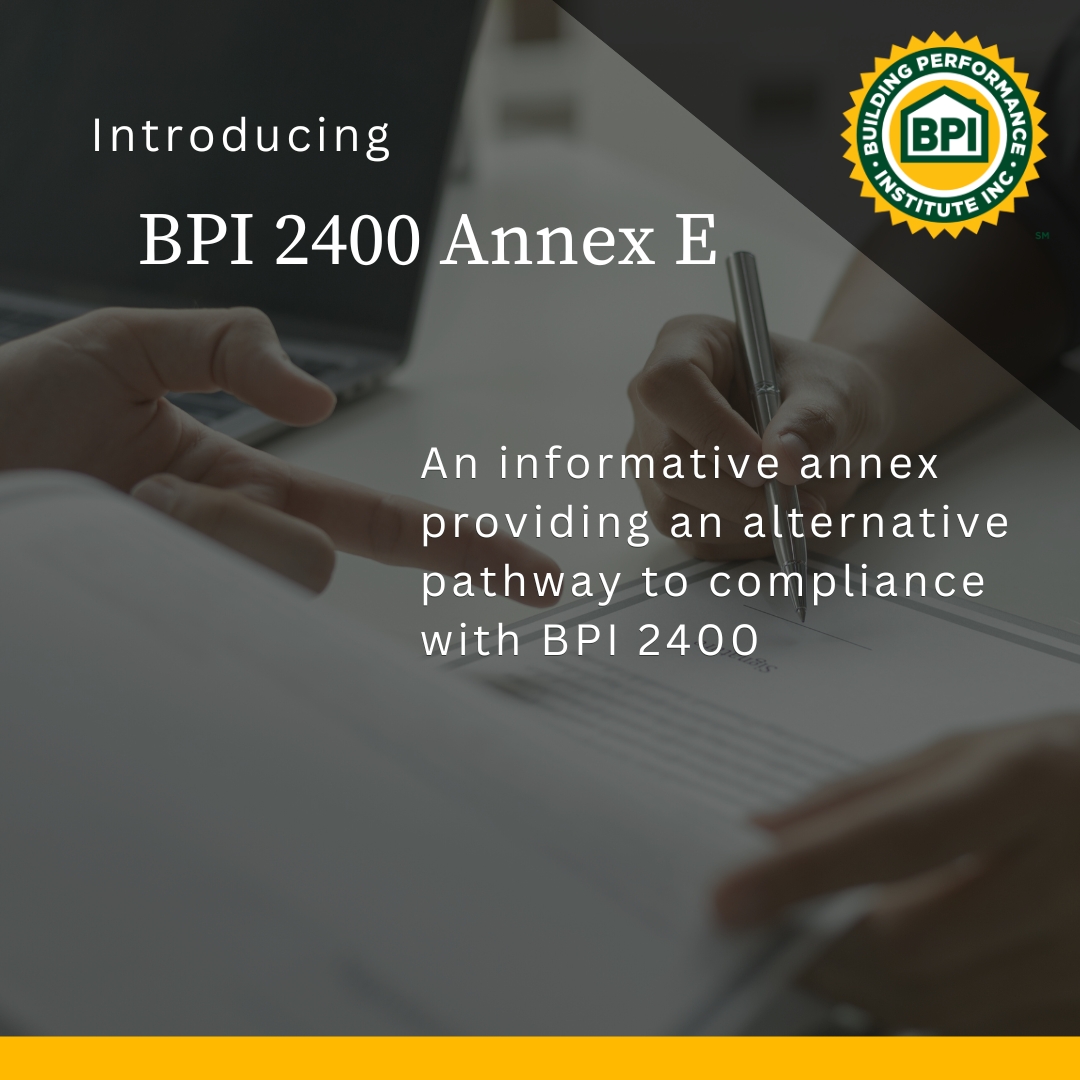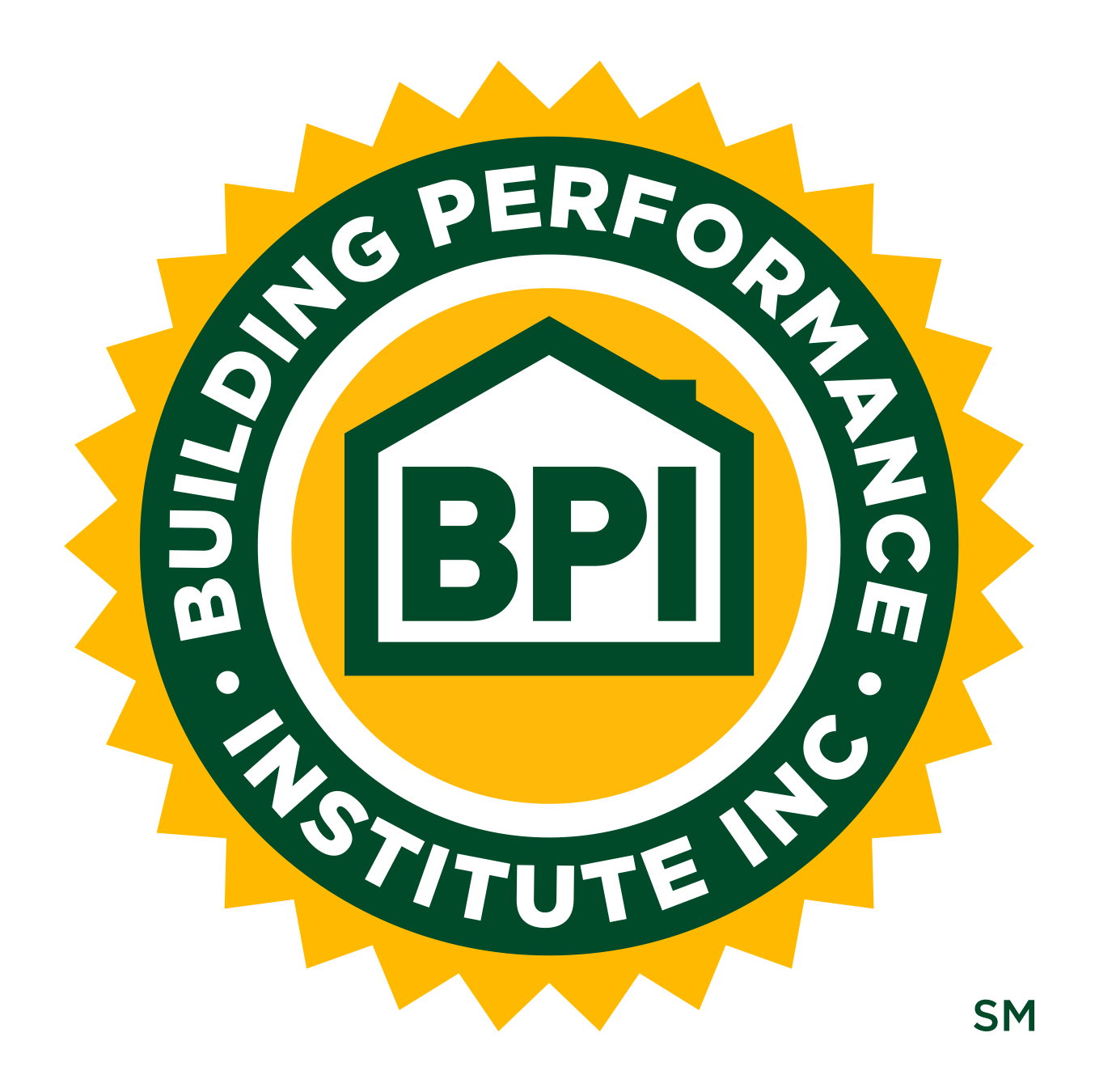BPI News
New Annex of BPI 2400 Supports Industry Needs for Inflation Reduction Act
posted at 2024-05-21 09:58:00
 The Building Performance Institute has released an informative annex to its standard, BPI 2400, which is referenced in the HOMES Energy Efficiency Rebate Program. BPI 2400 Annex E provides for an alternative pathway to compliance; no new requirements were added to the standard.
The Building Performance Institute has released an informative annex to its standard, BPI 2400, which is referenced in the HOMES Energy Efficiency Rebate Program. BPI 2400 Annex E provides for an alternative pathway to compliance; no new requirements were added to the standard.Since 1993 BPI has developed industry standards that foster quality and consistency throughout the nation’s home performance and weatherization workforce. BPI standards are periodically updated in response to advancing knowledge and industry needs and are freely available for use.
BPI 2400 is the Standard Practice for Standardized Qualification of Whole-House Energy Savings Predictions by Calibration to Energy Use History. It specifies the requirements and process for the calculation of standardized predicted savings using approved building energy simulation software.
BPI 2400 is referenced in the HOMES Energy Efficiency Rebate Program, part of the Inflation Reduction Act of 2022 (IRA). To ensure that public monies achieve the desired results, the legislation specifies that State Energy Offices to use “procedures…for determining the reductions in home energy use resulting from the implementation of a home energy efficiency retrofit that are calibrated to historical energy usage for a home consistent with BPI 2400, for purposes of modeled performance home rebates.”
Understanding BPI 2400
Like all BPI standards, The Delta Standard was developed by a working group of Subject Matter Experts, representing a wide variety of interest categories and geographical locations, in a consensus-based process.
This standard specifies a process to calibrate the model to the actual energy use of the home, using an approved building energy simulation software tool and actual energy bills. It provides a set of criteria to be used in the final calculation of standardized estimated savings that may be considered in compliance with this standard.
What Changed in the Standard?
The main body of the Delta Standard, previously numbered as BPI-S-2400-2015, was not altered, but Annex E of the standard was adjusted to meet industry needs related to the IRA. The standard specifies 12 months of good data on energy usage for calibration. Unfortunately, this information is not always available, as when homeowners do not retain good records on usage of delivered fuels, or when data on connected fuel usage from utilities is not in clean, usable formats.
The 2024 addition of Annex E provides an alternative pathway to compliance when good data is not available; no new requirements were added to the standard. The language in the Annex for the alternative pathway’s use stresses that preferred sources of highest-quality data are to be explored before it is used. The current Delta Standard is numbered as BPI-S-2400-2015 v.2.
What Software is Compliant to BPI-2400
The additions will allow software vendors to develop products that meet the needs of both contractors and programs. Contractors will be able to model the results of home performance retrofits with ease. States will gain confidence that the information on retrofit results is accurate and dependable.
While BPI-2400 details a standard practice for calibrating predictive tools to actual energy use history, it does not stipulate which software tools are compliant to the standard. To that end, the U.S. Department of Energy and the National Renewable Energy Laboratory has published a set of procedures to verify software compliance to the modeled pathway for single-family homes in section 50121 of the Inflation Reduction Act. https://www.energy.gov/scep/articles/home-efficiency-rebates-ira-section-50121-single-family-software-verification
BPI standards are freely available for use. Current standards may be found here. Read

